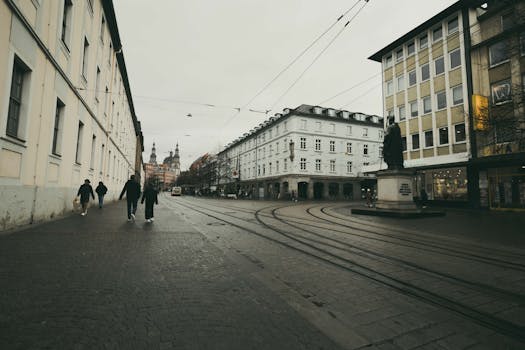
Urban Green Spaces: The Future of Outdoor Living in European Cities by 2025
Urban green spaces are becoming increasingly important in European cities, as they provide a range of benefits for both the environment and residents. Urban green spaces are areas of land that are specifically designed and managed to provide ecological, social, and economic benefits to urban communities. These spaces can take many forms, including parks, gardens, green roofs, and urban forests.
Benefits of Urban Green Spaces
The benefits of urban green spaces are numerous and well-documented. Some of the most significant advantages include:
- Improved air quality: Urban green spaces can help to remove pollutants from the air, improving the overall quality of the air that residents breathe.
- Climate regulation: Green spaces can help to regulate the urban climate, providing shade and cooling the air through evapotranspiration.
- Noise reduction: Urban green spaces can act as a buffer against noise pollution, creating a more peaceful and tranquil environment for residents.
- Increased biodiversity: Green spaces can provide a habitat for a wide range of plant and animal species, helping to promote biodiversity in urban areas.
- Improved mental health: Spending time in urban green spaces has been shown to have a positive impact on mental health, reducing stress and anxiety.
Examples of Urban Green Spaces in European Cities
Many European cities are already incorporating urban green spaces into their design and planning. Some examples include:
- The High Line in London: An elevated park built on an old rail line, providing a green oasis in the heart of the city.
- The Bois de Vincennes in Paris: A large urban forest that provides a peaceful escape from the hustle and bustle of city life.
- The Parken in Copenhagen: A network of parks and green spaces that crisscross the city, providing ample opportunities for outdoor recreation and relaxation.
The Future of Urban Green Spaces in European Cities
As we look to the future, it is clear that urban green spaces will play an increasingly important role in European cities. By 2025, we can expect to see even more innovative and sustainable green spaces being developed, as cities strive to become more environmentally friendly and livable. Some of the trends that are likely to shape the future of urban green spaces include:
- Increased use of green roofs and walls: These can help to reduce energy consumption, improve air quality, and provide habitats for wildlife.
- More emphasis on community engagement: Urban green spaces will be designed to be more inclusive and accessible, with opportunities for community involvement and participation.
- Greater focus on sustainability: Urban green spaces will be designed with sustainability in mind, using recycled materials, minimizing waste, and incorporating renewable energy sources.






